Canada Lynx
S Germain, USFWS photo
The Canada lynx (Lynx canadensis) is a medium-sized felid that ranges across the northern areas of North America including the Crown of the Continent. It is characterized by long, dense fur, triangular ears with black tufts at the tips, and broad, snowshoe-like paws which are a specialized adaptation allowing lynx to capture prey in winter. Canada lynx occurs predominantly in dense boreal forests, and its range strongly coincides with that of the snowshoe hare (Lepus americanus) on which it depends heavily as prey. The species is federally listed as Threatened in the coterminous United States (USFWS 2017).
Conceptual Model PHASE 2
This conceptual model is intended to convey a situation analysis for the Canada lynx (hereinafter referred to as feature) in the transboundary Crown of the Continent Ecosystem. It is a working diagram that captures life history characteristics important to feature persistence as well as key threats and biophysical factors and the relationships among these elements. The model strives to illustrate important cause-and-effect relationships that impact this feature. Together, the model and other analyses are used:
to help stakeholders arrive at a shared understanding of this feature
for discussion with subject matter experts
to develop a spatial design: where do opportunities exist for conservation of the feature on this landscape?
to develop a strategic design: what are the strategies and actions likely to result in long-term persistence of the feature?
Orange Box - Driver: The indirect threats, opportunities, and other important variables that positively or negatively influence direct threats. Also called a “root cause” or “indirect threat,”, drivers are pervasive, underlying anthropomorphic activities or conditions that require policy level interventions to lessen their impact on landscape features.
Pink Box - Direct Threat: Human actions (e.g., overfishing, urban development) or natural phenomena (e.g., wildfire) that immediately degrade one or more landscape features. Natural phenomena are considered direct threats when their relative impact is increased by human activities.
Red Chip: Indicates a ‘high’ level threat to the landscape feature, as identified by subject matter experts. These threats are carried over to spatial design optimization models if reasonable spatial data is available.
Yellow Chip: Indicates a ‘lower’ level threat to the landscape feature, as identified by subject matter experts. This is not to say these direct threats are not significant; rather the urgency/importance of addressing these threats are secondary to high threats.
Tan Box - Biophysical Factor: represent any factor (including, but not limited to traditional stresses) that connect a driver or direct threat to a focal landscape feature. They are used to show the mechanism of how drivers and direct threats affect a landscape feature(s).
Rounded Green Box - Landscape Feature: Ecological (e.g., species, community, ecological process) and Cultural (e.g., land access) elements that represents biodiversity or human well-being needs found in the Crown of the Continent LCD project area. Landscape Features are the units around which we set goals, carry out conservation actions, and measure conservation effectiveness. Landscape Features are selected by the LCD Leadership Team as representatives of broader Cultural and Ecological elements of the Crown landscape: we do not identify selected as ‘priorities’ or ‘surrogates’ but rather measurable units that are important to all stakeholders.
Green Ovals - Key Attribute: Attributes of landscape features that are important to the feature’s long-term persistence. Attributes are intrinsic values of the feature but also represent attributes we can measure and map and therefore provide opportunities to develop conservation strategies around.
Black Arrows: show the influence over or relationship that each factor has to other factors. Some drivers may affect or influence other drivers and/or more than one direct threat. Likewise, a direct threat may affect >1 other threat, landscape feature or key attribute of a feature. Arrows inform on critical relationships among landscape elements and potential paths along which to develop strategic approaches for conservation intervention or investment.
— Following the Conservation Standards (formerly Open Standards for the Practice of Conservation)
Citations
Krosby, M., Michalak, J., Morgan, H., Robbins, T.O., Norheim, R., Mauger, G., and T. Murdock. 2016. Creating a practitioner-driven, science-based plan for connectivity conservation in a changing climate: A collaborative assessment of the climate-connectivity needs in the Washington-British Columbia transboundary region. Appendix E.
USFWS. 2016. Species Status Assessment for Canada lynx: Contiguous United States Distinct Population Segment.
PHASE 2 OPTIMIZATION MAP (DRAFT)
This draft map represents a spatial optimization approach to identify conservation opportunity for the identified feature. Input data for the feature include estimates of occurrence, density or habitat affinities, and data describing high-level threats. The 30% and 70% optimization targets represent the range of plausible conservation objectives for the feature. These targets will be refined at stakeholder workshops during Phase 3 of the LCD process. Optimization models are developed using Marxan software.


